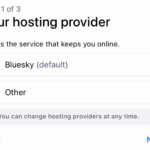Is social networking eating the web? This question probes a fundamental shift in how we interact with the internet. From the rise of microblogging platforms to the explosion of visual sharing, social networking has fundamentally altered our online experiences. This exploration delves into how these platforms have reshaped user engagement, content consumption, and the very landscape of the traditional web.
We’ll examine the evolution of these platforms, their impact on businesses, and the potential future of the digital sphere.
The evolution of social networking is inextricably linked to the changing ways we consume and share information. Once the primary means of finding information was through traditional websites, social media algorithms now dictate much of our online experiences. This shift has profound implications for how we discover content, interact with businesses, and even form social connections. The question becomes whether this shift is a necessary evolution or a detriment to the broader web.
Defining the Phenomenon: Is Social Networking Eating The Web

Social networking has become an undeniable force in the modern world, transforming how we communicate, interact, and consume information. It’s more than just connecting with friends; it’s a complex ecosystem that has evolved dramatically over the years, impacting various aspects of daily life. This section will delve into the core aspects of social networking, from its definition to its diverse forms and pervasive influence.Social networking platforms have fundamentally altered how we interact with each other.
They provide a space for users to connect, share information, and build communities. The evolution of these platforms mirrors the evolution of technology itself, moving from early online forums to the sophisticated visual-centric and hyper-personalized networks we see today.
Definition of Social Networking
Social networking, in its simplest form, refers to online platforms that facilitate connections between individuals based on shared interests, relationships, or other commonalities. These platforms allow users to create profiles, share content, and interact with others. A defining characteristic is the ability to establish and maintain connections with a large number of people simultaneously. This differs from traditional methods of communication, which often rely on a smaller, more localized network.
Evolution of Social Networking Platforms
The evolution of social networking platforms is marked by significant technological advancements and shifts in user needs. Early platforms, such as Friendster and MySpace, focused on creating online profiles and connecting with friends. The rise of Facebook marked a transition towards more structured networks and a broader range of functionalities. Subsequently, platforms like Twitter introduced microblogging, emphasizing concise communication and real-time updates.
The advent of visual-centric platforms like Instagram and Pinterest further diversified the ways users could engage with social media. Each platform built upon the successes and shortcomings of its predecessors, adapting to changing trends and user expectations.
Types of Social Networking Sites
Social networking sites cater to a variety of user needs and interests. Microblogging platforms, exemplified by Twitter, allow for brief, frequent updates, fostering real-time conversations and news dissemination. Professional networking sites, like LinkedIn, focus on career development, connecting professionals and facilitating business opportunities. Visual sharing platforms, such as Instagram and Pinterest, prioritize visual content, allowing users to share photos, videos, and creative works.
These different types of platforms cater to specific niches and user groups, reflecting the diversity of online interactions.
Role of Social Networking in Daily Life
Social networking has permeated almost every aspect of modern daily life. From staying connected with family and friends to staying informed about current events, social networking platforms play a crucial role. It enables users to share experiences, discover new interests, and participate in global conversations. This integration into daily routines is a significant marker of the impact of these platforms.
Ways People Use Social Networking Platforms
People utilize social networking platforms in a variety of ways. Some individuals use them for personal communication, staying in touch with loved ones. Others utilize them for professional networking, connecting with colleagues and potential clients. Businesses leverage social networking for marketing and customer engagement. The diverse usage patterns highlight the adaptability and versatility of these platforms.
Comparison of Social Networking Platforms
| Feature | |||
|---|---|---|---|
| Primary Content Type | Text, photos, videos, events | Text updates (tweets) | Photos and videos |
| Primary Purpose | Connecting with friends and family, sharing updates, joining groups | Real-time updates, news, discussions, connecting with influencers | Sharing visual content, discovering new accounts, building communities |
| Typical User Interaction | Posting updates, liking posts, commenting, joining groups | Tweeting, retweeting, following accounts, engaging in conversations | Liking posts, commenting, following accounts, creating stories |
Social networking platforms offer diverse features to cater to the needs of various users. The table above presents a simplified comparison of three prominent platforms, highlighting their primary content types, purposes, and user interactions. This comparative overview offers a starting point for understanding the distinctions between these social networking giants.
Social Networking’s Impact on Traditional Web

The internet, once dominated by static web pages, has undergone a dramatic transformation. Social networking platforms have become powerful forces, reshaping how users interact with information and each other. This shift has profoundly impacted traditional web usage, leading to a new paradigm of online engagement.The rise of social media has altered the very fabric of the internet. Users are increasingly drawn to platforms offering dynamic content updates, interactive communities, and personalized experiences, often abandoning the more structured, static nature of traditional websites.
This shift is not merely a change in preference; it represents a fundamental change in how we consume and share information online.
Shift in User Engagement
Traditional websites relied heavily on static content, requiring users to actively seek out information. In contrast, social networking platforms offer constant updates, prompting users to engage in real-time discussions and interactions. This continuous flow of information and engagement has led to a significant shift in how users spend their time online. Users are drawn to the immediacy and community aspects of social platforms.
Key Features Attracting Users
Several features of social networking platforms have attracted users away from traditional websites. These features include:
- Real-time updates: The ability to see what others are doing and sharing in real-time fosters a sense of connection and immediacy. This contrasts with the static nature of traditional web pages that often require specific searches for current information.
- Interactive Communities: Social platforms create a sense of community through forums, groups, and profiles. This fosters interaction and allows users to connect with others who share similar interests, unlike the more impersonal nature of many traditional websites.
- Personalized Experiences: Social media algorithms tailor content feeds to individual users, providing a highly personalized experience. This differs significantly from the one-size-fits-all approach of many traditional websites.
- Visual Content: The prevalence of images and videos on social platforms caters to a broader range of user preferences. Traditional websites often relied more on text-based content, limiting their appeal to those with different learning styles.
Impact on Information Consumption and Sharing
Social networking platforms have fundamentally altered how we consume and share information. Traditional websites often relied on structured hierarchies of information, making it sometimes difficult to navigate and find relevant content. Social networks, on the other hand, encourage a more organic and fluid exchange of information. Users share links, articles, and ideas readily, creating a rapid dissemination of information.
Content Discovery on Social Networks vs. Traditional Websites
Content discovery on social networks differs significantly from traditional websites. On social platforms, information is often discovered through recommendations, trends, and interactions with friends. This “social discovery” method is very different from the -based searches and structured navigation found on traditional websites.
Influence of Social Media Algorithms
Social media algorithms play a crucial role in shaping user behavior and information consumption. These algorithms prioritize certain content based on user engagement and interactions. This can lead to filter bubbles, where users are primarily exposed to information that aligns with their existing views. For example, a user with a particular political viewpoint might only encounter news sources that reinforce their existing stance, highlighting the potential for biased information consumption.
Is social networking really eating the web? It’s a fascinating question, and the rise of platforms like TikTok is definitely a factor. Knowing how to effectively integrate these videos into your WordPress site, like how to embed TikTok videos in WordPress , is crucial for reaching a wider audience. Ultimately, the answer might be a bit more nuanced than a simple yes or no, depending on how you approach the changing digital landscape.
| Year | Dominant Web Usage | Description |
|---|---|---|
| Pre-2000s | Traditional Websites | Static, text-heavy pages; primarily used for informational content and limited user interaction. |
| 2000s | Social Networking Sites | Rise of platforms like Facebook and MySpace; user-generated content, social interactions, and community building became central. |
| Present | Hybrid Model | A blend of traditional website usage and social networking; users frequently navigate between both types of platforms, seeking information and connecting with others. |
The Web’s Changing Landscape
The internet, once a primarily informational space, has evolved dramatically with the rise of social networking. This shift isn’t just about connecting people; it’s fundamentally altering how we consume information, conduct business, and interact with the digital world. Social networking platforms are no longer just social spaces; they’re integral components of the modern web, reshaping its very fabric.The traditional web, with its emphasis on static content and linear navigation, is being redefined by social interactions and dynamic content feeds.
This transformation is evident in how websites and businesses have adapted to incorporate social networking elements. The shift has also impacted how people find information and shop online, altering the advertising and marketing landscape.
Websites Adapting to Social Networking Trends
Websites are increasingly incorporating social features to enhance user engagement and interaction. News websites, for example, often embed social media sharing buttons and integrate comments sections. E-commerce platforms have integrated social login options, making it easier for users to create accounts and manage their purchases across multiple platforms. These adaptations allow users to easily share content and connect with others within the website’s context, making the experience more personalized and interactive.
Social Networking’s Impact on Business Operations
Social networking platforms have revolutionized how businesses operate online. Businesses now leverage social media for customer service, marketing campaigns, and building brand awareness. Direct interaction with customers through social media allows for faster responses to issues, fostering customer loyalty and trust. Real-time feedback and trends can be gathered, providing invaluable data for product development and business strategy.
Social listening tools allow businesses to monitor public perception of their brand and competitors, making strategic decisions in a data-driven manner.
Information Seeking Before and After Social Media
Information discovery before social media often involved searching through individual websites, using search engines like Google. After the rise of social media, individuals often rely on social media feeds to discover news, recommendations, and opinions. Social media has become a primary source of information, with curated content tailored to individual interests. This has changed how people find and process information, impacting their ability to differentiate between credible and unreliable sources.
The Rise of Social Commerce and its Impact on Online Retail
Social commerce, a method of buying and selling products and services through social media platforms, has grown rapidly. Businesses are using social media platforms to directly sell their products, creating engaging content that drives sales. Users can browse and purchase products directly within social media feeds, making the buying process more convenient and integrated. Influencer marketing, often integrated into social commerce strategies, allows for targeted marketing to specific demographics, increasing brand awareness and sales.
Social Networking’s Influence on Online Advertising and Marketing
Social networking platforms provide powerful tools for online advertising and marketing. Targeted advertising allows businesses to reach specific demographics and interests, increasing the effectiveness of their campaigns. Businesses can use social media to build brand awareness and engage with potential customers, fostering loyalty and brand identity. Real-time data analysis enables businesses to optimize their strategies based on audience engagement and campaign performance, creating dynamic and responsive marketing campaigns.
Table: Business Use of Social Media for Marketing
| Social Media Platform | Marketing Strategies |
|---|---|
| Targeted advertising, community building, event promotion | |
| Visual marketing, influencer collaborations, product showcases | |
| Real-time engagement, customer service, news dissemination | |
| Professional networking, industry insights, B2B marketing | |
| TikTok | Trendy content, viral marketing, short-form video engagement |
The Future of the Web
The digital landscape is constantly evolving, and social networking is at the forefront of this transformation. The web, once primarily a repository of static information, is now a dynamic space driven by user interaction and personalized experiences. This evolution presents both exciting opportunities and complex challenges for the future of the web.The future of the web, intertwined with social networking, promises innovative developments and profound impacts on how we interact, communicate, and access information.
This includes not only the evolution of existing platforms but also the emergence of entirely new models for online interaction.
Potential Future Developments in Social Networking
Social networking platforms are likely to continue to integrate more sophisticated AI-powered tools, personalizing user experiences even further. Predictive features, personalized recommendations, and automated content moderation will become more prevalent. Virtual and augmented reality technologies will also likely play a significant role, enabling users to interact in immersive virtual environments. This could lead to new forms of social interaction, collaboration, and entertainment.
Is social networking truly consuming the web? It’s a compelling question, and the answer might lie in how we correctly measure content engagement. Understanding metrics like time spent on a platform, post shares, and comment frequency, as discussed in correctly measure contents engagement , could offer a more nuanced perspective. Ultimately, if social platforms are effectively driving traffic away from other websites, then perhaps the answer is yes, but only a thorough examination of engagement can give a definitive answer.
For example, virtual concerts and social gatherings could become increasingly common.
Impact of Emerging Social Networking Technologies on the Web
Emerging social networking technologies are likely to significantly impact the web’s architecture and functionality. Decentralized social networks, leveraging blockchain technology, could offer users more control over their data and interactions. This approach aims to address concerns about data privacy and algorithmic manipulation. For instance, platforms like Mastodon, emphasizing user-controlled data, are a nascent example of this trend.
Additionally, the metaverse, with its immersive social experiences, could reshape online commerce, education, and entertainment.
It’s a constant debate: is social networking truly devouring the traditional web? Recent data from TikTok and Meta advertisers’ Q1 2025 figures paints a fascinating picture. While the sheer volume of user engagement on platforms like TikTok is undeniable, the long-term implications for the overall web landscape remain to be seen. Is this a temporary shift or a permanent reordering of how we interact online?
The answer likely lies somewhere in the middle.
The Role of Algorithms in Shaping User Experience
The debate surrounding the role of algorithms in shaping user experience is ongoing. Algorithms are increasingly used to personalize content feeds, filter information, and even moderate interactions. The potential for bias and manipulation in algorithmic systems is a significant concern. However, algorithms can also be powerful tools for fostering connection, organizing information, and streamlining online experiences. Transparency and accountability in algorithmic design are critical to mitigating risks and maximizing benefits.
For instance, Facebook’s use of algorithms to curate news feeds has sparked debate regarding the spread of misinformation.
Examples of Web Adaptation to Evolving Social Landscape
The web is adapting to the evolving social landscape by incorporating features that promote community and collaboration. Interactive maps, personalized news feeds, and group chat functionalities are examples of how platforms are designed to facilitate social interaction. Moreover, platforms are increasingly integrating tools for creating and sharing multimedia content, enriching user engagement and providing a more immersive experience.
For example, platforms like TikTok prioritize short-form video content, reflecting a shift in user preferences toward engaging visuals.
Potential Future Features of Social Networking Platforms
| Feature | Description |
|---|---|
| Personalized AI Assistants | AI-powered tools to manage social interactions, schedule events, and provide personalized recommendations. |
| Decentralized Social Networks | Platforms based on blockchain technology, empowering users with greater control over their data and interactions. |
| Virtual and Augmented Reality Integration | Immersive social experiences through virtual environments and augmented reality overlays. |
| Gamified Social Experiences | Incorporating game mechanics to enhance engagement and encourage participation. |
| AI-driven Content Moderation | Automated systems to detect and address harmful content in a more nuanced and proactive manner. |
Comparison of Traditional and Modern Web Design Methods
| Factor | Traditional Web Design | Modern Web Design (Social Media Influenced) |
|---|---|---|
| Content Focus | Static, primarily text-based information | Dynamic, user-generated content, multimedia-rich |
| User Interaction | Limited, primarily passive consumption | Interactive, collaborative, and personalized experiences |
| Design Approach | Structured, hierarchical layouts | Fluid, adaptable layouts responsive to user behavior |
| Platform Dependence | Specific platforms, often requiring dedicated software | Cross-platform compatibility, accessible through various devices |
| Content Distribution | Centralized distribution channels | Decentralized, user-driven sharing |
Content Creation and Consumption
Social networking platforms have fundamentally reshaped how we create and consume content. This shift has impacted everything from the way we share our lives to how we get our news. The constant stream of information and the diverse formats available have created a dynamic and often overwhelming experience.
Creative Content Formats on Social Media
Social media platforms are brimming with diverse content formats, catering to various tastes and interests. From captivating videos to thought-provoking articles, the range is impressive. This variety allows creators to connect with their audiences on multiple levels, fostering engagement and fostering a sense of community. Examples include short-form videos (TikTok, Instagram Reels), live streams (Instagram Live, Facebook Live), interactive stories (Instagram Stories, Snapchat), and photo essays (Instagram, Pinterest).
Impact of Short-Form Content on Long-Form Consumption
The rise of short-form content has undeniably influenced how we consume long-form content. Users’ attention spans are often limited, leading them to gravitate towards easily digestible formats. While this trend has potentially impacted the depth of engagement with long-form content, it has also spurred innovation in how long-form content is presented. For instance, long-form articles are increasingly being adapted for shorter, more accessible formats, such as social media summaries or excerpts.
Furthermore, the ability to quickly share links to long-form articles via social media has increased their visibility and reach, leading to greater engagement and awareness.
Social Media’s Influence on News Consumption and Information Spread
Social media has become a significant platform for news consumption and information dissemination. While it offers unprecedented speed and reach, it also presents challenges. The rapid spread of information, both accurate and inaccurate, can lead to the rapid dissemination of misinformation. Users are often presented with a curated feed, potentially exposing them to biased or incomplete information.
This highlights the need for critical thinking and media literacy skills in navigating the online landscape. Platforms themselves are increasingly employing strategies to combat the spread of misinformation.
Social Media’s Impact on Media Interaction
Social media platforms significantly affect how people interact with different media types. For example, users can now share and discuss news articles, videos, and other forms of media directly within their social feeds. The immediacy and ease of sharing encourage social discourse and facilitate the rapid spread of ideas. Furthermore, platforms allow for personalized experiences, tailoring media consumption based on individual preferences and interests.
Content Consumption Across Social Media Platforms
Content consumption varies across different social media platforms. TikTok, for instance, thrives on short-form video content, while Instagram emphasizes visually engaging images and stories. Twitter is known for its quick bursts of information and real-time updates. The format of each platform heavily influences the type of content that users engage with and the way it is consumed.
Table of Content Formats on Social Media
| Platform | Content Format | Example |
|---|---|---|
| TikTok | Short-form videos, trending challenges | Dance videos, comedy skits, educational tutorials |
| Photos, videos, stories, reels | Product showcases, personal updates, behind-the-scenes content | |
| Short messages, links, images, videos | News updates, opinions, product announcements | |
| Posts, videos, groups, events | Personal updates, company announcements, community discussions | |
| YouTube | Long-form videos, tutorials, documentaries | Educational videos, movie trailers, product reviews |
User Experience and Interaction
Social media platforms have fundamentally reshaped the way we interact online. This shift isn’t just about connecting with friends; it’s about the entire user experience, from the design of the interface to the psychological factors driving our behavior. Understanding these nuances is crucial for comprehending the profound impact social networking has had on the web.The user experience on social media platforms is a complex interplay of design elements, user interactions, and the very psychology of engagement.
It’s not simply about presenting information; it’s about crafting an experience that keeps users coming back for more. This involves creating a seamless flow, intuitive navigation, and a visually appealing design. Positive user experiences encourage deeper engagement, fostering a sense of community and belonging.
Key Elements of a Positive User Experience on Social Media
Social media platforms prioritize intuitive interfaces that are easy to navigate. A positive experience hinges on simplicity, clear calls to action, and an aesthetically pleasing design. Visual appeal, coupled with effective use of whitespace and visual hierarchy, is paramount in attracting and retaining users. Accessibility features, ensuring the platform is usable by individuals with disabilities, is becoming increasingly important.
Role of User Interaction in Shaping the Web’s Content and Design
User interaction directly influences the content and design of social media platforms. The algorithms used by these platforms analyze user behavior, including what they click on, share, and comment on. This data informs the content recommendations and the overall design, creating a personalized experience for each user. Feedback loops, in which users can express their preferences and opinions, are essential to adapting the platform to user needs.
Impact of Social Networking on User Engagement and Attention Spans
Social networking platforms often utilize techniques that maximize user engagement. Features like notifications, real-time updates, and interactive content, like live videos and polls, encourage continuous interaction. However, this constant influx of information can contribute to shorter attention spans and potentially lead to information overload. The nature of social media’s fragmented content consumption, often characterized by brief interactions and rapid scrolling, may affect cognitive function.
Psychological Factors Driving User Behavior on Social Networking Sites
The desire for social connection, validation, and belonging are powerful psychological drivers of user behavior on social media. The fear of missing out (FOMO) and the need for self-expression contribute to frequent platform usage. The ability to create and maintain online personas, often distinct from offline identities, can be a significant factor. Moreover, the immediate gratification and reward systems employed by many social media platforms can contribute to addictive behavior.
Influence of Social Networking on Social Connections
Social networking platforms have undeniably transformed how we form and maintain relationships. They allow us to connect with people across geographical boundaries, fostering new friendships and maintaining existing ones. However, social media can also present challenges, such as the potential for superficial connections, cyberbullying, and the comparison trap. The online environment can sometimes lead to a distorted view of reality, influencing self-perception and social dynamics.
Comparison of Traditional Websites and Social Media Platforms, Is social networking eating the web
| Feature | Traditional Website | Social Media Platform |
|---|---|---|
| User Interaction | Primarily one-way communication; users primarily consume content. | Two-way communication; users actively participate in content creation and sharing. |
| Content Focus | Information dissemination, product promotion, or knowledge sharing. | Social interaction, community building, and personal expression. |
| Data Usage | Limited data collection for user behavior analysis. | Extensive data collection for targeted advertising and content recommendations. |
| Engagement Style | Passive consumption of static content. | Active engagement with dynamic, real-time content. |
Last Recap
In conclusion, social networking’s influence on the web is undeniable. From altering user behavior to reshaping business strategies, its impact is pervasive. While social media platforms have undeniably revolutionized online interaction, the future remains uncertain. The ongoing debate about algorithms, content consumption, and user experience will continue to shape the evolution of both social networking and the web itself.
Ultimately, the question of whether social networking is “eating” the web is less about a binary answer and more about understanding the complex and multifaceted ways these platforms are transforming the digital landscape.









